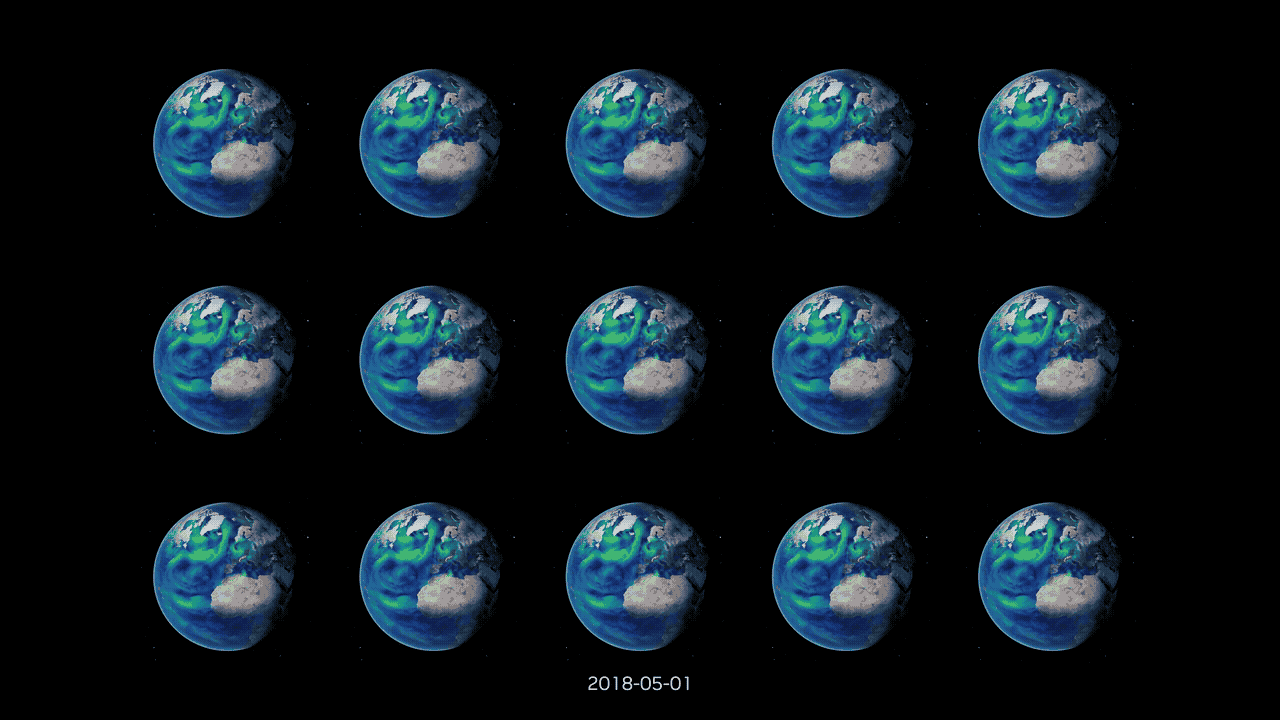FourCastNet3 (FCN3) is the latest AI global weather forecasting system from NVIDIA Earth-2. FCN3 offers an unprecedented combination of probabilistic skill, computational efficiency, spectral fidelity, ensemble calibration, and stability at subseasonal timescales. Its medium-range forecasting accuracy matches that of leading machine learning models, such as GenCast, and exceeds that of traditional numerical weather prediction systems, such as IFS-ENS.
A single 60-day FCN3 rollout with 0.25° and 6-hourly resolution is computed in under four minutes on a single NVIDIA H100 Tensor Core GPU—an 8x speedup over GenCast and a 60x speedup over IFS-ENS.
It also has remarkable calibration and spectral fidelity, with ensemble members retaining realistic spectral properties even at extended lead times of 60 days. FCN3 demonstrates a significant leap towards data-driven weather prediction with large ensembles from medium-range to subseasonal timescales.

FCN3 architecture
FourCastNet3 employs a fully convolutional, spherical neural operator architecture, based on spherical signal processing primitives (see Figure 2). Unlike FourCastNet2, which is based on the Spherical Fourier Neural Operator, FCN3 uses local spherical convolutions alongside spectral convolutions.
These convolutions are parameterized using Morlet wavelets and formulated in the framework of discrete-continuous group convolutions. This approach enables anisotropic, localized filters well-suited to localized atmospheric phenomena, while also guaranteeing computational efficiency through a custom implementation in NVIDIA CUDA.
FCN3 introduces stochasticity at every predictive step through a latent noise variable whose evolution is governed by a diffusion process on the sphere. This hidden-Markov formulation enables efficient one-step generation of ensemble members—a key advantage over diffusion model-based approaches. FCN3 is trained jointly as an ensemble, minimizing a composite loss function that combines the continuously ranked probability score (CRPS) in space and in the spectral domain. This approach ensures that FCN3 learns the correct spatial correlations in the underlying stochastic atmospheric processes.
Scaling ML models is often crucial to achieving competitive skill, but the effects of scale haven’t been investigated in data-driven weather models. FCN3 is unusual in its computational ambition. To scale it, we introduce a novel paradigm for model-parallelism inspired by domain decomposition in traditional numerical weather modeling.

This approach enables us to fit larger models into VRAM during training by splitting the model across multiple devices, while lowering the disk I/O per device. To enable this, spatial operations such as convolutions are implemented in a distributed fashion using the NVIDIA Collective Communications Library (NCCL). Using this technology, FCN3 is trained on up to 1,024 GPUs, using simultaneous domain, batch, and ensemble parallelism. Check out our training code.
FourCastNet3 outperforms the best physics-based ensemble model, IFS-ENS, and matches Gencast in terms of predictive skill (see Figure 3). On a single NVIDIA H100, FCN3 produces a single 15-day forecast at 6 hourly temporal resolution and 0.25° spatial resolution in a minute—an 8x speedup over Gencast and a 60x speedup over IFS-ENS.
Its probabilistic ensembles exhibit spread-skill ratios consistently near one, indicating well-calibrated forecasts where the predicted uncertainty aligns closely with observed atmospheric variability. Rank histograms and additional diagnostics confirm that ensemble members remain interchangeable with real-world observations, affirming the reliability and trustworthiness of FCN3’s predictions.
Critically, FCN3 preserves atmospheric spectral signatures across all scales, faithfully reproducing the energy cascade and sharpness of real-world weather patterns even at extended lead times of up to 60 days. Unlike many ML models that blur high-frequency features or devolve into noisy artifacts over time, FCN3 maintains stable, physically realistic spectra—enabling accurate, sharp, and physically consistent forecasts well into the subseasonal range.
This is shown in Figure 3, which depicts FCN3 predictions of 500 hPa wind intensities initialized on February 11, 2020, shortly before Storm Dennis made its landfall over Europe. FCN3 accurately captures the magnitude of wind intensities and their variability across different length scales, illustrated by the faithful angular power spectral density of the respective predictions. This remains even at extended rollouts of 30 days (720 hours) or longer.

Getting started with FourCastNet3
The fully trained FourCastNet3 checkpoint is available on NVIDIA NGC.
An easy way to run FCN3 inference is using Earth2Studio. To run a single 4-member ensemble inference, you can execute the following code:
from earth2studio.models.px import FCN3from earth2studio.data import NCAR_ERA5from earth2studio.io import NetCDF4Backendfrom earth2studio.perturbation import Zerofrom earth2studio.run import ensemble as runimport numpy as np# load default packagemodel = FCN3.load_model(FCN3.load_default_package())# determine output variablesout_vars = ["u10m", "v10m", "t2m", "msl", "tcwv"]# data source initial conditionds = NCAR_ERA5()io = NetCDF4Backend("fcn3_ensemble.nc", backend_kwargs={"mode": "w"})# no perturbation required due to hidden Markov formulation of FCN3perturbation = Zero()# invoke inference with 4 ensemble membersrun(time=["2024-09-24"], nsteps=16, nensemble=4, prognostic=model, data=ds, io=io, perturbation=perturbation, batch_size=1, output_coords={"variable": np.array(out_vars)},)Results from this inference are depicted in Figure 4. For optimal FCN3 performance, we recommend installing torch-harmonics with custom CUDA extensions enabled and using automatic mixed precision in bf16 format during inference (which is the default in Earth2Studio). If you want to run custom FCN3 inference or train it yourself, you can find the code in makani.

Learn more about FCN3
Learn more about FourCastNet3 with these resources:
Full author list
Boris Bonev (NVIDIA), Thorsten Kurth (NVIDIA), Ankur Mahesh (LBNL), Mauro Bisson (NVIDIA), Karthik Kashinath (NVIDIA), Anima Anandkumar (Caltech), William D. Collins (LBNL), Mike Pritchard (NVIDIA), Alex Keller (NVIDIA)

